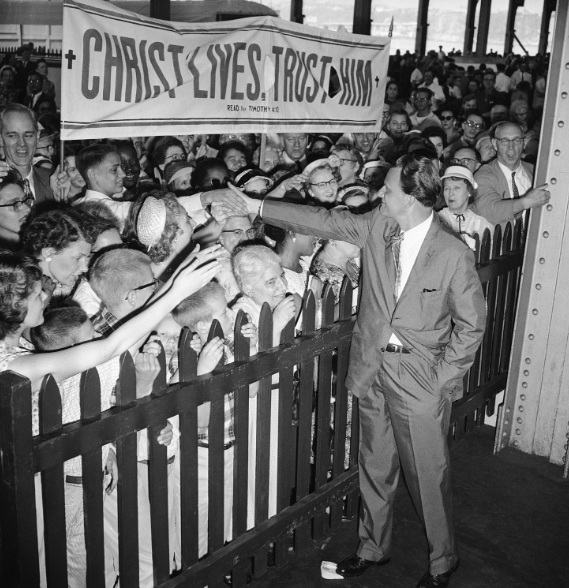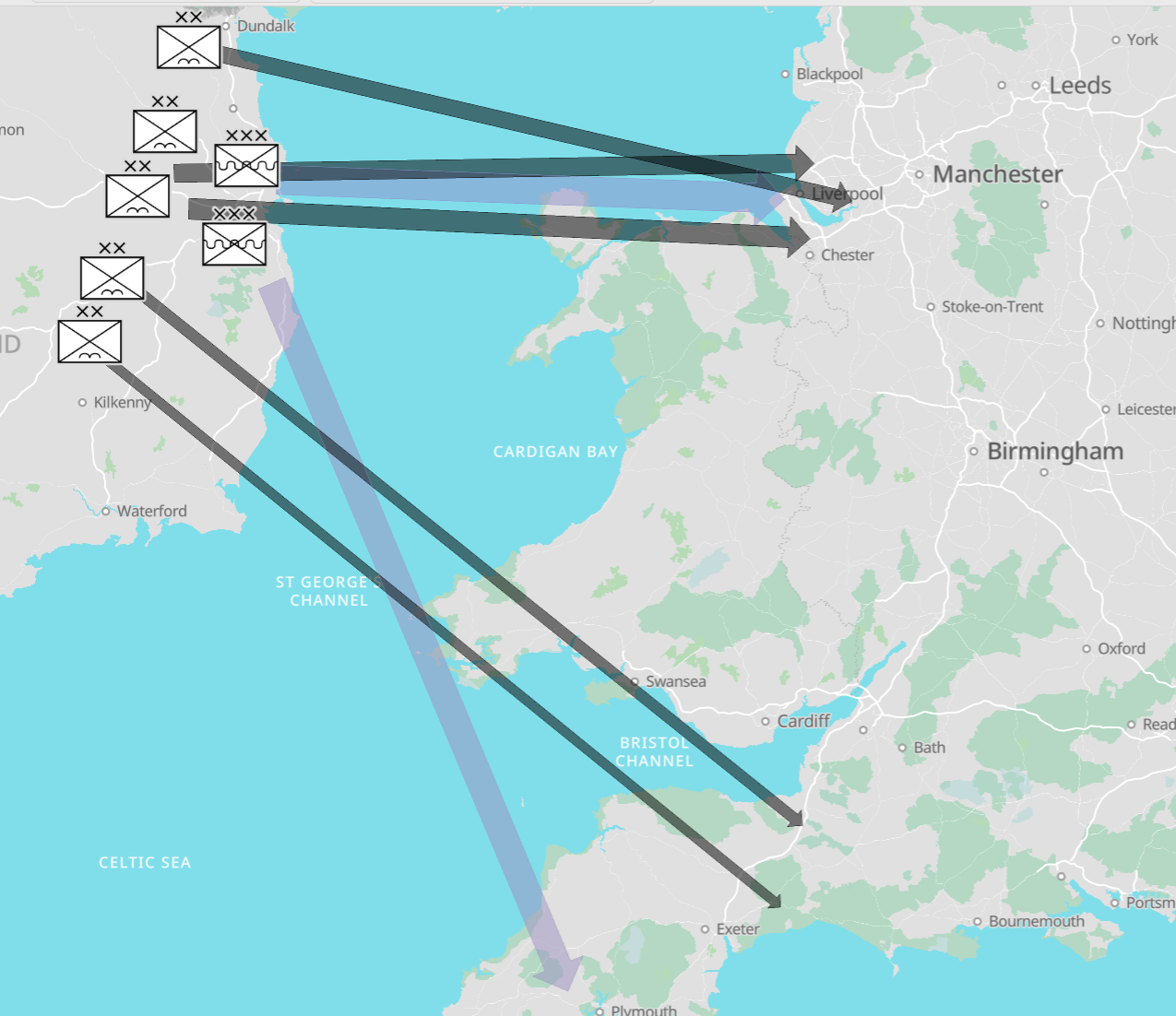While the future of the war effort had come under significant threat by debates in Washington in the first third of 1951, the nation’s domineering Chief of Staff might have been expected to move on the front foot to make his presence felt. Indeed, Patton had planning to travel back to Washington from his African military HQ in Accra, Ghana, from where he had directed the campaigns in Benin-Nigeria and West Africa over the past year before he fell serious ill from malaria, leaving him largely out of action until the spring. This illness had ensured the key questions of war and peace that surrounded the 1951 budget negotiations were solely a civilian political matter, and reduced the great General’s stature at home – where his larger than life presence had led many to assume that he would exercise significant control over such crucial decisions. Nonetheless, while weakened politically and with new political pressure bearing down on his back, he had not wasted his time in plotting the next stage of the war.
After the near-flawless execution of capture of Ifni, US Marines forged northwards into the Moroccan interior through April, capturing the historic city of Marrakesh without a fight. It was only in the final week of the month that they faced serious resistance for the first time, just south of the key port of Casablanca where a mixture of native Moroccan and British troops formed defences that were far too strong the exhausted marines, with their overstretched supply lines, to break. As a result, over the next fortnight fighting in the Moroccan front paused almost entirely while both sides hurried reinforcements to the front.
At this delicate stage of the campaign, Casablanca was everything. Without it, the Americans were reliant on a single modestly sized port in Ifni with which to supply their entire force in Morocco, a port which was already 400-odd miles from the frontline. If the Americans could not capture Casablanca, with its valuable port facilities, in May then their entire operation risked failure. It was with this front of mind that General Patton relocated from his headquarters in Accra to the more rustic surrounds of Ifni in order to plan a daring and typically highly aggressive operation.
Throughout his military career, Patton’s central philosophy had been that the key to victory was an unrelentingly offensive posture and the mobility required to take advantage of it. From 4 May, American forces began to attack the fortified positions in and around Casablanca – supporting by a heavy naval bombardment. However, the main focus of the American offensive was not in Casablanca itself but the countryside just east of the city, where US forces unleashed the concentrated power of swarm of hundreds of tanks – piercing through the syndicalist lines and driving into the space behind. By noon on 7 May, motorised infantry reached Rabat, just north of Casablanca and in doing so cut the city off from the rest of Morocco. This manoeuvre precipitated the total collapse of the syndicalist defence of the country over the course of the next two weeks.
While the large Internationale force in Casablanca fought on for some time longer – the city, and its 75,000 surviving defenders, surrendered on 13 May. But by the time this occurred Casablanca was the least of the syndicalists’ worries. After the capture of Rabat, advanced American units had continued northwards before swinging east to seize Fez. Left in disarray by the rapid movement of US forces in their rear, the syndicalists had attempted to withdraw back to new lines – but in so doing left a large 70,000-strong force just west of Fez to be enveloped and destroyed.
By now, complete panic and chaos had taken hold among the syndicalists. On 21 May, after American troops moved into Tangiers, the government of the Commune of Morocco offered their unconditional surrender to the United States, as the Internationale ordered a complete withdrawal from the country. The syndicalist forces fled in three directions – eastward towards Algeria, and towards the Rif ports of Ceuta and Melilla. While those that went east, for the most part, slipped out of the American grasp, the troops that attempted to escape by sea saw no promised evacuation force materialise while Patton’s men remained hot on their tails – leading to no fewer than a quarter of a million further syndicalist soldiers being captured at the ports, bringing the total number of Internationale troops captured in the course of just three weeks past 400,000. This was a victory of great scale and strategic importance, achieved at minimal cost and breakneck speed. If Patton’s star had been tarnished after the bloody campaigns in West Africa in 1950, his reputation as a military genius had been embellished once more.
Hot on the heels of their great victories in Morocco, Patton, ever the aggressive commander, demand that his tired troops keep up their momentum and push on into Algeria – once the heartland of the French Republican government whose exiled administration remained a nominal member of the Entente alliance. After the rapid pace of the syndicalist collapse in Morocco, the battle for Algeria was notably slower as the syndicalists stymied efforts to outflank them as they made an orderly retreat back to the gates of Algiers over the course of three weeks. By the time they reached the city, the Americans’ supply lines were badly overstretched and the Internationale had brought large numbers of reinforcements to the front. But nonetheless, victory still appeared within close reach.
Weakened by the loss of his Congressional majority and the thrusting approach of the Conservatives, which had seen him agree to unhappy compromises over Prohibition and the budget, in 1951 President Thurmond was in desperate need of finding a new motivating force to revive his Presidency and energise the home front behind the war effort. He would find it in God.
American Christianity had been significantly changed by the evangelical revival brought about by the Fourth Great Awakening. Beginning in the ruins of industrial cities of the Mid West, recently liberated from the syndicalists, during the Civil War – it quickly swept over the entire nation and saw major Protestant Churches split and fundamentalist denominations surge in strength as charismatic revivalist meetings attracted mass audiences. By the second half of the 1940s, the energy of the Awakening had largely dissipated – with the comforts of material prosperity, the fading of memories of the existential threat to American Christianity posed by the Civil War, and the institutionalisation of many of the key political aims of the evangelical movement, playing their part. However, its imprint was permanent – with adherents of evangelical denominations forming the largest single block of American society, outnumbering mainline Protestants for the first time.
However, the United States’ entry into the Weltkrieg in 1948 had changed things, and brought a new generation of revivalist preachers to the fore, the most significant of whom was the electrifying Billy Graham. A North Carolinian Southern Baptist, Graham had witnessed the wartime evangelisation of the late 1930s as a young man and was inspired to dedicate his life to Christ. Like many other evangelists, Graham was strongly supportive of the war against the Third Internationale – viewing it in terms of a manichaean struggle between good and evil, Christian civilisation and syndicalist barbarism. And he would frequently centre his sermons around the spirit of Crusade – seeing his audiences grow rapidly in size and enthusiasm, not only in the South but across the country.
President Thurmond, who was himself a Southern Baptist, was keen to capture this energy to support his struggling government and ferment wider public enthusiasm for the continuation of the war and embraced the new revivalists more closely than any of his predecessors. After spending Easter with Graham at the end of March, in April he attended a mass meeting being held at Charleston, South Carolina, his home state, where he appeared on stage alongside Graham and other preachers and spoke to the audience in biblical terms about the sacred mission to overcome the Internationale and liberate the millions of Christians living under tyranny in Europe. After this, Thurmond invited Graham to become his personal spiritual counsel and take on the capacity of an official advisor to the White House.
The Internationale’s defeats through 1950 and 1951 had been visibly costly and left the syndicalist movement appearing more vulnerable on the international stage than at any point since the defeat of the German Empire. Naturally, this attracted the interest of the Moscow Accord, the other great victor from the destruction of the Hohenzollern imperium half a decade before, whose own vicious anti-revolutionary ideological predilections had been suppressed in the name of realpolitik for years. Yet now, as the Americans and their Entente allies reached with miles of the European continent, it was still widely assumed that their outright victory would necessitate the Russians opening a second front. Yet in this, Russia’s mighty generalissimo Baron Wrangel was cautious – reluctant to throw his nation, still recovering from the horrific losses sustained on the Eastern Front a decade before and struggling to integrate the newly reconquered territories back into the Russian state, into another catastrophic conflict for the benefit of his unreliable old American allies.
However, others within Moscow’s orbit were much less circumspect. Indeed, the greatest advocated for Accord intervention were not in Moscow at all but in Berlin. Crushed between the twin pincers of Wrangel and the syndicalists, the German Republic was born in the final days of the first phase of the Weltkrieg as Social Democrat politicians deposed the Kaiser in absentia after he had fled the country from Germany and threw themselves at the feet of the Russians. Left in control only over the eastern and northern lands of Prussia, Hannover and Saxony while syndicalists states were established in Austria and West Germany, the Republic struggled to survive its first years amidst a mass influx of refugees from the west and the total devastation of the country.
While the Russians busied themselves establishing new states in their own image across, monarchical and reactionary, across the new states of eastern Europe than came under their control after the defeat of the Kaiserreich, Republican Germany stood out distinctly. It was perhaps inevitable that a Social Democratic government would not last long in this context, with right-winger Theodore Oberlander assuming power at the head of a union of conservative and nationalist parties in 1947. Oberlander would prove more independent than the Russians might have predicted – with a strongly anti-syndicalist line that often caused discomfort in the uneasy peace in continental Europe and friendliness with the Americans. Having played a key role in supporting Germany through the humanitarian catastrophe of the mid-1940s, the United States was very popular in East Germany while many saw in its war with the Internationale the nation’s only hope of reunification.
Consistently arguing for a second intervention in the Weltkrieg within the Moscow Accord, as Entente forces closed in on Europe itself Oberlander began to make ever more open and provocative offers of support – including the donation of military equipment to the United States and the signing of a treaty of friendship, that saw the Americans affirm their recognition of the Berlin regime as the legitimate government of all Germany.





















